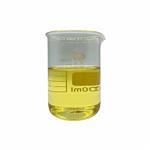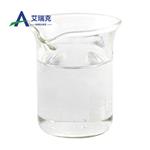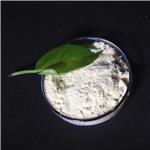- Methyl eugenol
-

- $6.00 / 1KG
-
2024-04-22
- CAS:93-15-2
- Min. Order: 1KG
- Purity: More than 99%
- Supply Ability: 2000KG/MONTH
- Methyl Eugenol
-

- $0.00 / 1Kg
-
2024-04-07
- CAS:93-15-2
- Min. Order: 1Kg
- Purity: 99.9%
- Supply Ability: 200 tons
- Methyl eugenol
-

- $30.00/ kg
-
2024-03-31
- CAS:93-15-2
- Min. Order: 1kg
- Purity: 99%
- Supply Ability: 2000000
Related articles - Uses of Methyl eugenol
- Methyl eugenol is a natural constituent in many types of plants and fruits consumed by humans and animals, (e.g., anise, nutme....
- Feb 14,2022
|
| Product Name: | Methyl eugenol | | Synonyms: | 1-ALLYL-3,4-DIMETHOXYBENZENE;Eugenolmethylether,98%;Methyl eugenol (technical);1-ALLYL-3,4-DIMETHYOXYBENZENE;methyleugenol,1,2-dimethoxy-4-(2-propenyl)-benzene,veratrolemethylether;1-ALLYL-3,4-DIMENTHOXYBENZENE;Eugenol methyl ether
Methyl eugenol;EUGENOL METHYLETHER WITH GC | | CAS: | 93-15-2 | | MF: | C11H14O2 | | MW: | 178.23 | | EINECS: | 202-223-0 | | Product Categories: | INSECT HORMONE;93-15-2 | | Mol File: | 93-15-2.mol |  |
| | Methyl eugenol Chemical Properties |
| Melting point | -4 °C (lit.) | | Boiling point | 254-255 °C (lit.) | | density | 1.036 g/mL at 25 °C (lit.) | | vapor pressure | 0.463-1.983Pa at 25℃ | | refractive index | n20/D 1.534(lit.) | | Fp | >230 °F | | storage temp. | 2-8°C | | solubility | 0.5g/l | | form | Oil | | color | Colourless to Pale Yellow | | Odor | at 1.00 % in dipropylene glycol. sweet fresh warm spicy clove carnation cinnamon | | Odor Type | spicy | | Water Solubility | insoluble | | Merck | 14,6073 | | BRN | 1910871 | | Stability: | Stable. Combustible. Incompatible with strong oxidizing agents. | | InChIKey | ZYEMGPIYFIJGTP-UHFFFAOYSA-N | | LogP | 2.74-3.03 | | CAS DataBase Reference | 93-15-2(CAS DataBase Reference) | | IARC | 2B (Vol. 101) 2013 | | NIST Chemistry Reference | Benzene, 1,2-dimethoxy-4-(2-propenyl)-(93-15-2) | | EPA Substance Registry System | Methyleugenol (93-15-2) |
| | Methyl eugenol Usage And Synthesis |
| Description | Methyleugenol (ME) (4-alkyl-1, 2-dimethoxybenzene-carboxylate) is a natural chemical compound classified as a type of phenylpropanoid and it is the methyl ether of eugenol. ME is a widely distributed natural plant product and occurs in > 200 plant species in 32 families found mainly in the tropics. It is consumed by humans and animals in many plants and fruits (e.g., anise, nutmeg, basil, blackberry essence, bananas, and citrus), and ME is a yellowish, oily, naturally occurring liquid with a clove-like aroma and is present in many essential oils. | | Occurrence | Methyl eugenol is not very common in higher concentrations in the essential oils of Ocimum species. However, 20% methyl eugenol has been found in the oil of O. sanctum (Hegnauer 1966). Methyl eugenol has been detected as the main compound in an essential oil of O.basilicum var. minimum of Taiwanese origin (42.9-64.3%) and in the stem oil of O.basilicum (53.1%) of the same origin (Cheng and Liu 1983). In an oil of O.gratissimum of Brazilian origin, 46.8% methyl eugenol was found (Vostrowsky 1990). A high methyl eugenol concentration (24.7%) was reported by Brophy and Jogia (1986) from plant material of O.basilicum grown locally in Fiji. | | Application | Methyl eugenol is used as a flavouring agent in jellies, baked goods, non-alcoholic beverages, chewing gum, candy, puddings, relishes and ice cream and it is also widely used as a fragrance ingredient in perfumes (0.3–0.8%), creams and lotions (0.01–0.05%), toiletries and detergents. Moreover, ME has been used as an anaesthetic in rodents and it also is used as an insect attractant in combination with insecticides.
Methyleugenol is also a component of several essential oils that are sold for use in aromatherapy, massage oils and alternative medicines. Some essential oils, including citronella (Cymbopogon spp.), basil (Ocimum spp.), bay (Laurus nobilis) and tea tree (Melaleuca spp.), which may contain a high percentage of methyleugenol are used as fragrances in consumer products, such as personal care products and household cleaners. For example, citronella oil, which may contain methyleugenol, is an active ingredient in some commercially available personal insect repellent lotions and sprays that are applied to the skin and it is also used in outdoor candles and torches as an ambient insect repellent. | | Description | Clear colorless to pale yellow liquid. Spicy,earthy odor. Bitter burning taste. This chemical is combustible. Molecular weight = 178.23; Specific gravity 5 1.0396at 20℃; Vapor density 5 .1.0; Boiling point = 249℃;254.7℃ at 760 mmHg; Melting point 5 2 4℃; Vaporpressure 5 0.02 mmHg at 20℃; 1 mmHg at 85℃; Flashpoint 5 99℃; 109℃. Hazard Identification (based on NFPA704 M Rating System): Health 2; Flammability 1; Reactivity0. Practically insoluble in water; solubility 5 ,1 mg/mL at66�F; 500 mg/L. | | Chemical Properties | colourless to light yellow liquid | | Chemical Properties | Clear colorless to pale yellow liquid. Spicy,
earthy odor. Bitter burning taste. This chemical is combustible. | | Chemical Properties | Eugenol Methyl Ethe occurs in
numerous essential oils, sometimes at a very high concentration. The ether is
an almost colorless liquid with a mild-spicy, slightly herbal odor. It is prepared
by methylation of eugenol and is used in perfumery (e.g., in carnation and lilac
compositions) and in flavor compositions. | | Chemical Properties | Eugenyl methyl ether has a delicate clove–carnation odor with a bitter, burning taste. | | Occurrence | Reported in the essential oils of Myrtaceae and Luraceae; it was identifed originally in the essential oil from roots of Asarum europaeum L and Asarum canadense L Subsequently, it was identifed as the main constituent of the oil from wood of Dacrydium franklinii Hook (97 5%), in Melaleuca bracteata F v M (leaves, 90 to 95%), in Cinnamomum oliveri Bail (leaves, 90 to 95%), and as a minor constituent in the oils of betel, citronella, Japanese calamus, pimenta, hyacinth, rose, basil, bay, cajeput and others Reported found in heated blackberry, pepper, lovage seed, chervil, lemon balm, alpinia species, clove buds, nutmeg, pepper, mace, tarragon, Ocimum sanctum, laurel, myrtle leaf and berry, rosemary, pimento berry and mastic gum leaf oil | | Uses | Methyleugenol is a phenylpropene that is commonly found in plants such as nutmeg, pimento, lemongrass, tarragon, basil, star anise, and fennel. Methyleugenol has been shown to inhibit histone deacetylase (HDAC) activity in the human colon carcinoma cell line HT29. Compounds that exhibit HDAC-inhibitory properties or disrupt the HDAC complex have potential applications in cancer therapy and chemoprevention. In addition, Methyleugenol is a flavoring agent often used in consumer products such as jellies, baked goods, beverages,chewing gums, ice cream, and fragrance. | | Uses | Methyl eugenol may be used as an analytical reference standard for the quantification of the analyte in the following:????????
- Essential oil of Pimenta pseudocaryophyllus using high-performance liquid chromatography (HPLC). The purity of the extracted compound is then determined by gas chromatography coupled to flame ionization detector (GC/FID).???????
- Stem bark of Cinnamomum zeylanicum Blume using reversed-phase high-performance liquid chromatography (RP-HPLC) with UV-visible detection.???????
- Rosa hybrida using gas-chromatography coupled to mass spectrometry (GC-MS) technique.
| | Uses | Fragrance ingredient in perfumes, toiletries and detergents; flavor ingredient in baked goods. | | Definition | ChEBI: O-methyleugenol is a phenylpropanoid. It is functionally related to a eugenol. | | Preparation | Usually prepared by methylation of eugenol. | | Aroma threshold values | Detection: 68 ppb to 8 5 ppm. | | Taste threshold values | Taste characteristics at 5.0 ppm: spice, cinnamon and clove, mouth tingle, fresh, peppery and woody. | | General Description | Clear colorless to pale yellow liquid with a spicy earthy odor. Bitter burning taste. | | Air & Water Reactions | Insoluble in water. | | Reactivity Profile | Methyl eugenol is incompatible with strong oxidizers . May react exothermically with reducing agents to release hydrogen gas. | | Hazard | Possible carcinogen. | | Fire Hazard | Methyl eugenol is combustible. | | Biochem/physiol Actions | Taste at 1.5 ppm | | Safety Profile | Confirmed carcinogen. Poison by intravenous route. Moderately toxic by ingestion and intraperitoneal routes. A skin irritant. Mutation data reported. Combustible liquid. When heated to decomposition it emits acrid smoke and irritating fumes. Some other alkenylbenzenes have carcinogenic activity. See also EUGENOL, ALLYL COMPOUNDS, and ETHERS | | Potential Exposure | Methyl eugenol is a naturally occurring substance found in the essential oils of several plant
species. Methyleugenol is used as a flavoring agent in jellies, baked goods, nonalcoholic beverages, chewing gum,
candy, pudding, relish, and ice cream. Methyleugenol has
been used as an anesthetic in rodents. It also is used as an
insect attractant in combination with insecticides. | | First aid | Eyes: Consideration should be given to the skin,eyes, and respiratory tract (lung function tests) in any placement or periodic examinations. Evaluation by a qualifiedallergist, including careful exposure history and special testing, may help diagnose skin or respiratory tract allergy. | | Carcinogenicity | Methyleugenol is reasonably anticipated to be a human carcinogenbased on sufficient evidence of carcinogenicity from studies in experimental animals. | | storage | Color Code—Green: General storage may be used.You should protect this material from exposure to light, andstore it under ambient temperatures | | Shipping | UN2810 Toxic liquids, organic, n.o.s., Hazard
Class: 6.1; Labels: 6.1-Poisonous materials, Technical
Name Required. | | Purification Methods | Recrystallise the ether from hexane at low temperature and redistil it (preferably in vacuo). [Hillmer & Schorning Z Phys Chem [A] 167 407 1934, Briner & Fliszár Helv Chim Acta 42 2063 1959, Beilstein 6 H 963, 6 IV 6337.] | | Incompatibilities | Methyleugenol is Incompatible with
strong oxidizers (chlorates, nitrates, peroxides, permanganates, perchlorates, chlorine, bromine, fluorine, etc.); contact may cause fires or explosions. Keep away from
alkaline materials, strong bases, strong acids, oxoacids,
epoxides. Contact with reducing agents may cause the
release of hydrogen gas | | Waste Disposal | Dissolve or mix the material
with a combustible solvent and burn in a chemical incinerator equipped with an afterburner and scrubber. All federal,
state, and local environmental regulations must be
observed. |
| | Methyl eugenol Preparation Products And Raw materials |
| Raw materials | Eugenol-->4-Bromoveratrole-->ALLYL TOLUENE-4-SULFONATE-->3,4-DIMETHOXYPHENYLMAGNESIUM BROMIDE-->4-chloro-1,2-dimethoxy-benzene-->3,4-DIMETHOXYPHENYLBORONIC ACID, PINACOL ESTER-->ALLYL METHYL ETHER-->Allyl methyl sulfide-->Allyltrimethylsilane-->1,2-Dimethoxybenzene | | Preparation Products | BENZENE,1,2,4-TRIMETHOXY-5-(2-PROPENYL)--->FW 358.2-->4-trans-propenylveratrole-->ISOEUGENYLMETHYLETHER-->3,4-Dimethoxyphenylacetone-->2-CHLORO-3-(3,4-DIMETHOXYPHENYL)-1-PROPENE-->23EPOXYEUGENOLMETHYLETHER |
|